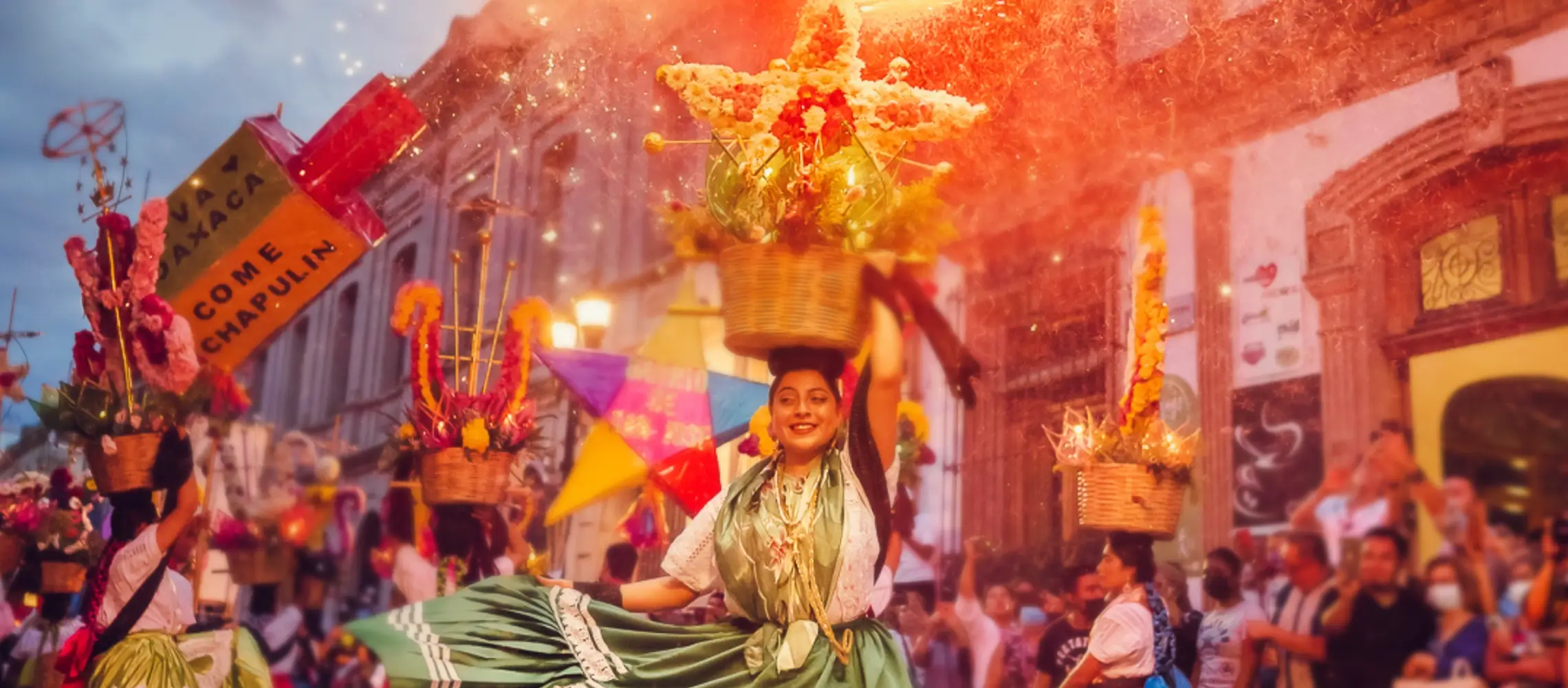Where does the Guelaguetza, the famous celebration in Oaxaca de Juárez, come from?
July 29, 2024
Discover the most representative customs of this beautiful festivity and learn about the origin and history of its emblematic symbols.
On July 22, 2024, on the beautiful celebration of the Guelaguetza in the state of Oaxaca, DeCorazón México was named winner in La Feria de Las Flores de San Angel contest, organized by the Museo Casa del Risco. This award allows us to continue promoting and defending the work of the most remote and outstanding artisans in the state. The decoration was adorned with crowns of bright colors. Their shape reminds us of the colorful ornaments of traditional dresses with which, each year, women from the 8 regions of Oaxaca gather to represent their villages with dances and striking outfits. Also, at our blue bench, next to the entrance, we created a “tiliche” to welcome visitors from all over the world. These characters, who dance with eccentric and extravagant steps, are an emblematic figure of the famous Oaxacan “calendas,” symbolizing the workers’ festival.
What is the Guelaguetza?
The colorful festivity is part of the continuous cultural changes that have been experienced in Oaxaca for centuries. What was once a local exchange festival is now a celebration known worldwide. The Guelaguetza is a festival centered around the so-called “Lunes Del Cerro” an event celebrated every Monday after July 16. During these dates, the famous “convites” take place throughout the state, consisting of recreational events such as dances, music, “marmotas,” and “mojigangas.” Its history is full of contradictions and encounters, as its practices have both Spanish and pre-Hispanic origins, particularly from the members of the Xochimilco neighborhood, who worshipped the gods Ehécatl, god of wind, and Xilonen, goddess of corn. Similarly, part of the tradition was also influenced by the Corpus del Carmen. This event involved taking out the patron saints, the holders of each town, to visit the neighborhood corresponding to their patronage. This event, initially celebrated only by Spanish settlers, was adopted and transformed by indigenous communities, changing the tradition with unique local elements. This local event particularly served as fertile ground for commerce. Opening ground for artisans of various garments and handicrafts to offer their merchandise to neighboring villages. The Guelaguetza, with its colors, dances, and music, has become a symbol of unity and pride for Oaxaca, preserving the essence of its cultural heritage while adapting to modern times.




